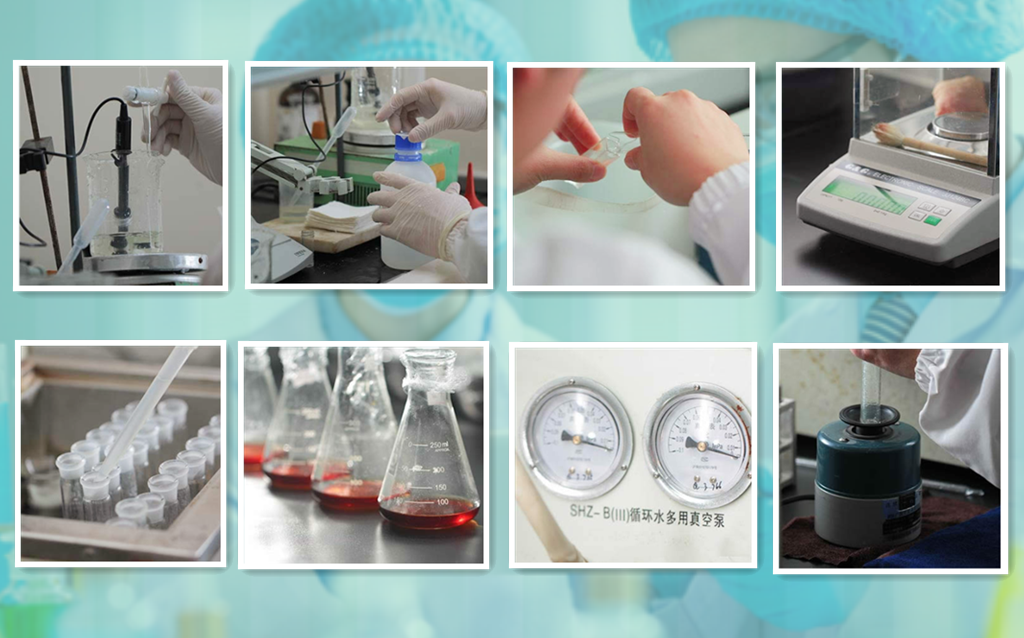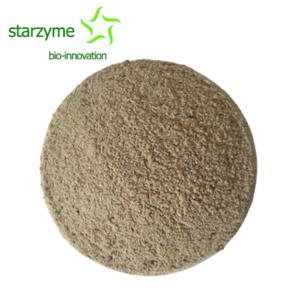Glucose Oxidase

- Starzyme
- China LiaoNing
- Within Two weeks afterreceivedthe order
- 150 Tons Permonth
1. Appearance: white or light brown powder with less than 8% of water content.
2. Activity: 1000 U/g
3. The glucose oxidase can be used for removing glucose from egg liquid to prevent discoloration and deterioration during storage.
4. The glucose oxidase can be used for deoxidation of citrus drinks and beer to prevent color deepening, flavor reduction and metal dissolution.
Glucose oxidase is prepared by deep liquid fermentation of Aspergillus niger. Glucose oxidase can specifically catalyze β-D-glucose to produce gluconic acid and hydrogen peroxide under aerobic conditions. The oxidation of 1 mol of glucose consumes 1 mol of oxygen without hydrogen peroxidase, whereas, the oxidation of 1 mol of glucose consumes 1/2 mol of oxygen with hydrogen peroxidase which can catalyze hydrogen peroxide to produce oxygen and water.
Features:
1. Appearance: white or light brown powder with less than 8% of water content.
2. Activity: 1000 U/g
3. Temperature: 30-60°C
4. pH: 4.5-7.5
Definition of the unit of the enzyme activity: One unit (U) is defined as the amount of enzyme needed to catalyze 1 μmol of β-D-glucose to produce D - gluconic acid and hydrogen peroxide at 30°C and pH 6.0 in 1 min.
Applications:
1. The glucose oxidase can be used for removing glucose from egg liquid to prevent discoloration and deterioration during storage.
2. It can be used for deoxidation of citrus drinks and beer to prevent color deepening, flavor reduction and metal dissolution.
3. It can be used for removing glucose from milk, cereals cocoa, coffee, shrimps, meat and other foods to prevent from browning.
4. Hydrogen peroxide produced by oxidation of glucose can oxidize the –SH group of wheat gluten into –S-S- group, which promotes the formation of a better structure of protein network. In bread processing, glucose oxidase has been used to replace potassium bromate which is carcinogenic.
5. Glucose oxidase catalyzes glucose to produce gluconic acid and consumes oxygen, which can help to form an acidic and anaerobic environment in the intestinal tract and promote the reproduction of beneficial bacteria.
6. Glucose oxidase catalyzes glucose to produce gluconic acid and hydrogen peroxide which detoxicates some mycotoxins by oxidization.
Usage:
In drinking water: 50-100 g/1000 L of water, In compound feeds: 100-200 g/1000 kg of feeds.
Specification: 20 kg/bag
Storage:
Store in dry and cool (below 25°C) area with ventilation. During transportation, avoid direct exposure to strong sunlight, rain and moisture. The enzymes will lose activity at high temperature or under strong sunlight. The enzyme activity can be maintained up to 90% for 6 months when stored at room temperature.

Analysis on the current pain points of the industry
1. False mark of enzyme activity
The product is marked with 100,000 enzyme activities, and the actual enzyme activity is 60,000, resulting in incomplete hydrolysis and indirectly increasing the cost of enzymes.
2. Product is unstable
Lack of enzyme protection technology and quality control, unstable enzyme activity, and differences in product specifications for each batch, resulting in product quality fluctuations.
3. Long production cycle
No enzymatic hydrolysis experience and enzyme compounding technology increase labor cost and R&D cycle, which indirectly affects the production schedule.
For us, our major is to solve these pain points
1. The enzyme activity can be customized, providing different enzyme activity products and solutions
2. Stable enzyme activity, unique enzyme activity protection technology to reduce fluctuations in production quality
3. Enzyme activity is not false, strict quality control links, third-party testing to reduce enzyme costs
Quality control strength
6 key control point inspections, escorting the whole process of quality, using extraction, membrane separation, vacuum freeze-drying, spray drying and enzyme activity protection technologies to produce products that fully meet the requirements of global customers.

Production capacity
Eight automatic primary fermentation cylinders (60 m³),
2 pure culture tanks (10 m³), 2 pure culture tanks (5 m³),
4 pure culture tank (4 m³), 2 pure culture tanks (1 m³),
4 pure culture tanks (0.3 m³), 1 large air compressors,
1 spray/drying tower (1 ton/h),
4 air drying and fluidized bed drying equipment
1 production line of ultra concentrate liquid enzyme.
The annual production capacity of the Starzyme is more than 20,000 tons of liquid, powd

Thank you for your browsing, as a professional manufacturer of enzyme preparations and micro-ecological preparations, we are also very willing to help you . If you want to know the targeted solution, please leave a message in the message window below, we will assign a professional product consultant to contact you.












